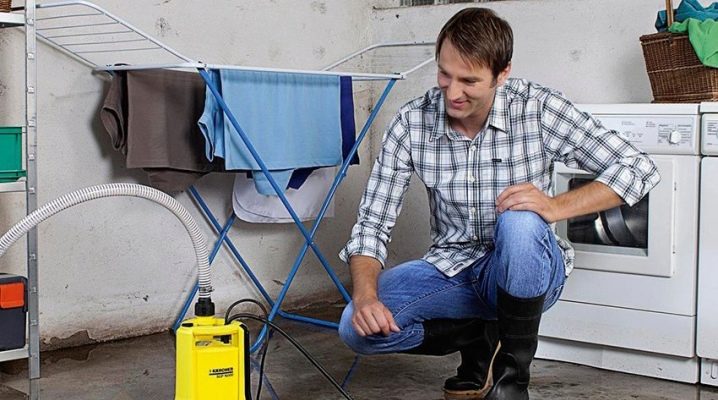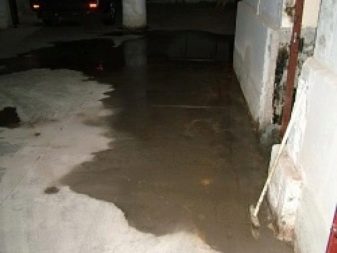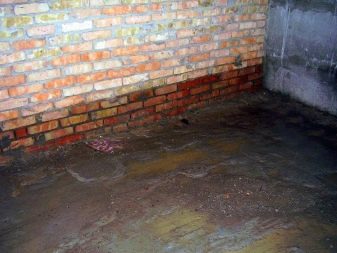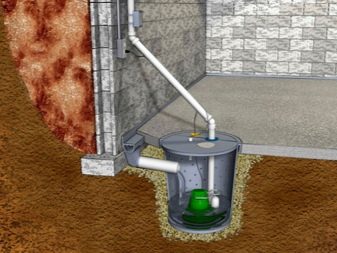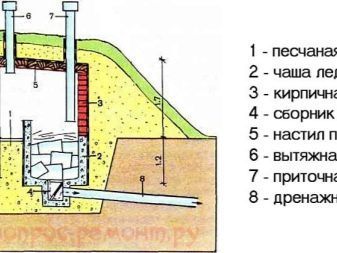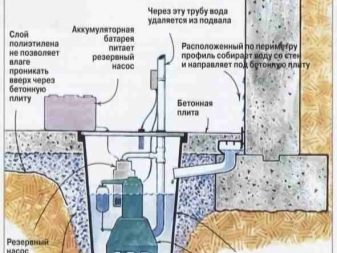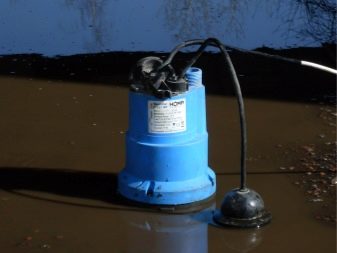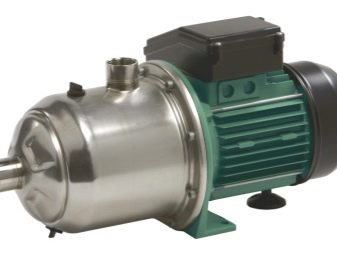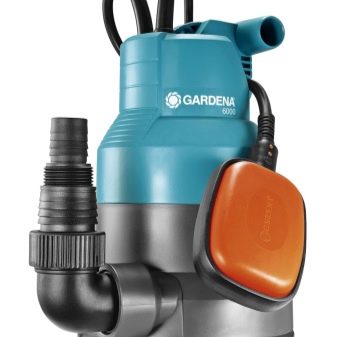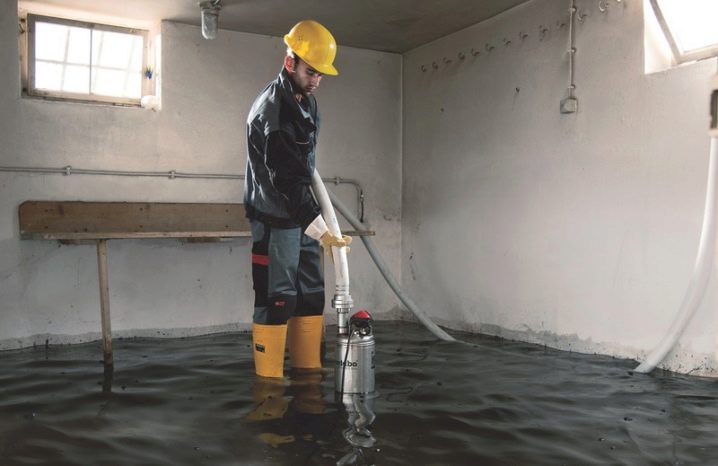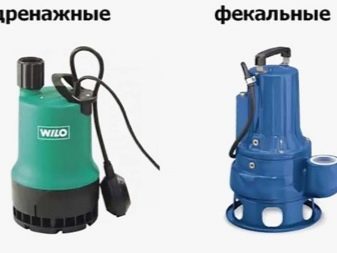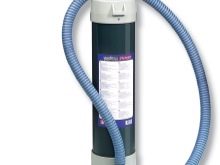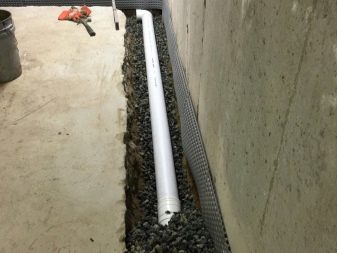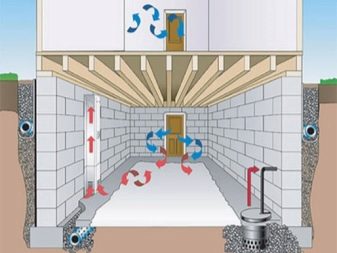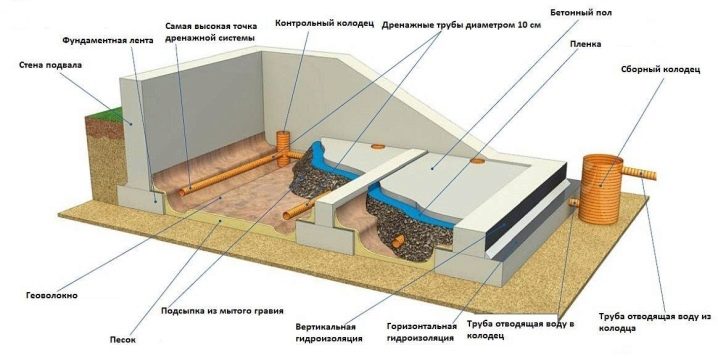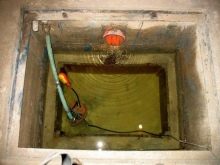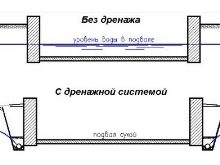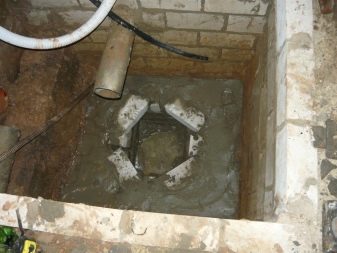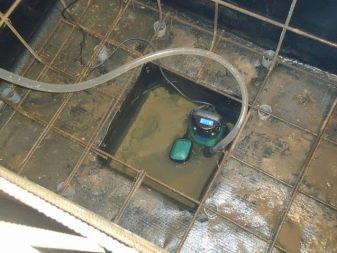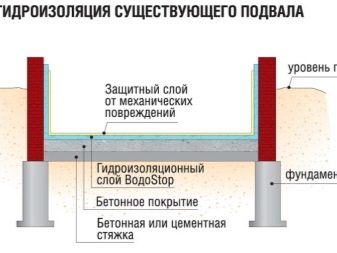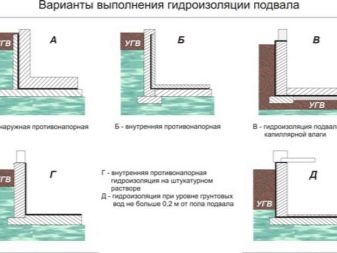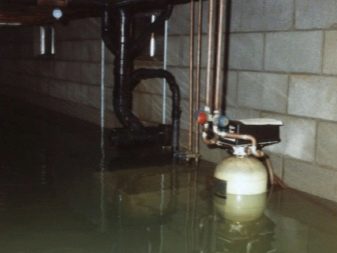How to properly and quickly remove water from the basement?
Water in the basement may appear due to a number of different reasons. This problem needs to be resolved as quickly as possible. It is possible to pump water out of the basement in various ways, which will be described later.
Special features
First of all, in the event of water in the basement, it is necessary to eliminate the cause of its formation. By eliminating the cause, you can prevent the flooding of the basement. Special attention should be paid to the factors that influence the formation of water.
- Groundwater. In spring, the groundwater level rises above the location of the basement, because of which it can leak through gaps and cracks. This can happen due to the fact that after melting snow or heavy precipitation, the earth absorbs water like a sponge and keeps it in itself.
- Improper installation of drainage or clogging. If in the basement all the same waterproofing of walls and ceilings was performed, but water still appeared in the basement, then you should pay attention to the insulation layer. It is required to check its integrity. To do this, you first need to pump out all the water from the basement. In some cases, people neglect the drainage system in order to save money, however, because of this, dampness will be concentrated in the basement, as waterproofing is unable to cope with this problem on its own.
There are situations when a long period of time the basement was dry and suddenly it was flooded and dampness appeared. This may be due to a change in the soil around the base. In this situation, it is required to divert water from the walls, and build a drainage ring along the perimeter of the foundation.
- The crack formed in the foundation of the house. Any violation of the integrity of the foundation can lead to the emergence of water in the basement. Damage to the base of the house can be associated with a number of errors made in the process. A surface that is damaged becomes vulnerable to moisture.Experts note that due to the effects of water, the amount of calcium in concrete is reduced. This adversely affects reliability and durability. Replacing the insulation in this case will not help, since the work to eliminate this problem must be thorough, since the reason for the formation of water is at the level of the building construction.
In addition to cracks and faults, one should pay attention to the capillary penetration of excess moisture, due to which fungal spores and molds form in the basement. The poor quality of the materials used in waterproofing can lead to this problem. Another reason could be an inefficient ventilation system in the basement.
For pumping water, you can choose a unit such as automatic electric pump. It is better to assemble it yourself, taking into account the recommendations of experts. Installing and pumping dry will be an easy task.
What is required?
There are various ways of pumping water from the basement, however, most of them involve the use of pumps. That pump is the main tool for the implementation of this procedure.Therefore, it is extremely important to familiarize yourself with the existing types of this equipment in order to understand their characteristic features. We will discuss the most common of them in detail below.
Surface pumps
Such pumps must be installed on the water surface or above its level. Water is sucked through a rigid pipe. Water is drained using a flexible garden hose. The main advantage of the presented system is that this pump is available for maintenance. The design is simple because it has no contact with water. This favorably affects the cost of equipment.
Since the pump operates outside of water, its operation is accompanied by strong noise. When the pump is in the water, its thickness absorbs noise. As noted earlier, the design of such a pump is simple. This is reflected in the fact that the equipment does not have a sealed enclosure and other elements, which is why it is necessary to protect it from water or moisture. Be sure to think about the placement of this device.
When choosing between pumps, you must also take into account the fact that the presented view cannot completely eliminate water. This is due to the increased accumulation of a certain amount of air in the pump.The equipment stops its work when air enters the pipe with water.
Therefore, it is possible to stop the choice on this type of the pump only in the event that it is necessary to use it infrequently. For example, it is required to pump out water from the basement during construction or during the season of heavy rainfall.
Submersible
This device is placed below the level of the fluid it will pump. This allows us not to worry not only about raising the liquid from a high depth, but also regarding engine overheating. Such a mechanism can be installed in wells, process tanks or wells. The main advantage of such pumps is their reliable functioning and long service life.
Before purchasing this equipment, specify whether it can be used for pumping dirty water. There are designs that are focused exclusively on the use of clean water, which is great for watering a garden or vegetable garden. Pumps that can be used for dirty water, perfectly cope with the pumping of liquid from contaminated wells, construction pits or basements.
Submersible pumps are distinguished by the presence of wider openings, which distinguishes them from conventional designs. This allows the "drainage" to pass particles whose diameter does not exceed 50 mm. Certain equipment can pump water in which the fibrous particles, such as algae or hair, are concentrated.
In order for the operation of the mechanism to be productive, it is required to select a model that is distinguished by the presence of a powerful engine. You should also pay attention to the depth at which the device is capable of pumping out water.
The main disadvantage of this type of pump is the fact that it is characterized by difficulty in maintenance.
Universal
In this category are those pumps that are used for pumping fluid from waste pits. This device operates in the submerged mode and is characterized by a large list of advantages. One of these advantages is that if you choose a high-quality unit, it will differ in high power and reliability of operation.
This design is characterized by a long operational life. It has a grinding device, so it can be used for pumping dirty water. The pump is not afraid of small garbage or sand.
Hand held
It is characterized by a cylindrical principle of action. Water is pumped and pumped out by means of a piston, which is driven by a human. A certain advantage of such equipment is that it does not depend on electrical. The design is reliable and easy to use, while the cost of the pump is low.
Pumping technique
To eliminate water from the basement in several ways. Let's talk about each of them in detail.
Drainage arrangement
This is the best method for dealing with groundwater. In this case, water can be discharged in one of two ways.
- Ditches that are not applicable for domestic purposes, since it is dangerous to dig them on the site, and they adversely affect its appearance. You can use this method for drying swamps.
- Special drainage pipes, the diameter of which is usually equal to 10 cm. Small holes are drilled across the entire surface of these pipes. They need to drip to the depth of drainage, which is located below the floor level on a slope. So it will be possible to ensure the free withdrawal of water.
The drainage system can be installed separately or together with other methods of drainage of the basement, however, using this method, you can eliminate the cause of flooding. The presented technique of pumping water from the basement demonstrates an excellent result.
Organization of automatic pumping water
In a situation where the plot is flat and there is no bias, you will have nowhere to put a drainage pipe, so you will need a different method. The automatic pumping system is the easiest way.
To organize this system, you first need to create a pit inside the basement. Its size should be 50 x 50 sentiments, and the depth of the pit should be at least 0.5 meters. With the help of brickwork, it is required to strengthen the walls, preventing them from shedding over time. The bottom must be covered with gravel. The thickness of this layer should be 10 cm.
Next, you need to install a drainage pump with an automatic control system in the pit. Hose attached to the system should be taken away from the building.
When the groundwater level rises, it can be traced in the pit. When the water reaches a certain level, the system will automatically function and pump it out. Consequently, excess moisture will be removed by the pump.If the water continues to accumulate, the pump will turn on again and pump it out. This will continue until the groundwater level drops.
This system is simple and reliable. The cost of its creation depends on the cost of the pump. As a drawback, it is worth noting that such a system does not eliminate the problem, but finds a temporary solution.
Waterproofing
If the water in the basement appears regularly and is constantly concentrated, you need to take care of waterproofing. You can create a protective barrier using bitumen-based mastic and plaster.
For this procedure, you will need materials that include mastic, waterproofing composition, river sand, plaster mesh and cement. For work, you will need a spatula, a construction mixer, a container for mixing the mixture and a brush that has the metallic bristles needed for mashing.
You must first thoroughly drain the basement. All surfaces must be cleaned from dirt and dust. Seams and corners are rubbed with a brush. The creation of waterproofing is carried out in several stages:
- Walls and floors must be treated with a waterproofing compound, so that cracks can be blocked, preventing the ingress of moisture.
- The seams, small cracks, corners need to miss with mastic. The entire surface is also treated. Layer at least 2.5 centimeters.
- A metal grid is installed on the wall surface, which is necessary for applying the plaster mix. It is applied with a spatula. 3.5 cm layer
- A grid is also required on the floor and concrete is poured. The room is left in this position until completely dry.
Due to high-quality waterproofing, it is possible to increase the wear resistance and durability of the foundation of concrete, which has a great effect on extending the life of the entire structure. This is a great alternative to drainage.
To learn how to make waterproofing, see the following video.
Tips
As noted earlier, almost all methods of pumping water involve the use of a pump, so it is extremely important to choose the right equipment. It is important to bear in mind that in the case of a private house, the pump is purchased not only for pumping water from the cellar or basement, but also for use in the household. The main indicator is power.
For domestic needs, 1 kW is sufficient, and for universal use it is used 3. In construction, pumps with a power of 5 kW are used.
Special attention should be paid to how polluted the water that the pump will pump. On this basis, it is possible to identify suitable variants of equipment with the necessary power.
- Clean environment or with low pollution. In this case, pumps are used in rainwater collectors or private pools.
- Average pollution. It uses sediment for wells, trenches, trenches.
- Heavy pollution - melt, storm, ground water. In this case, we need the most powerful technical tools.
To learn how to pump out water from the basement and protect the house from drainage water, see below.
